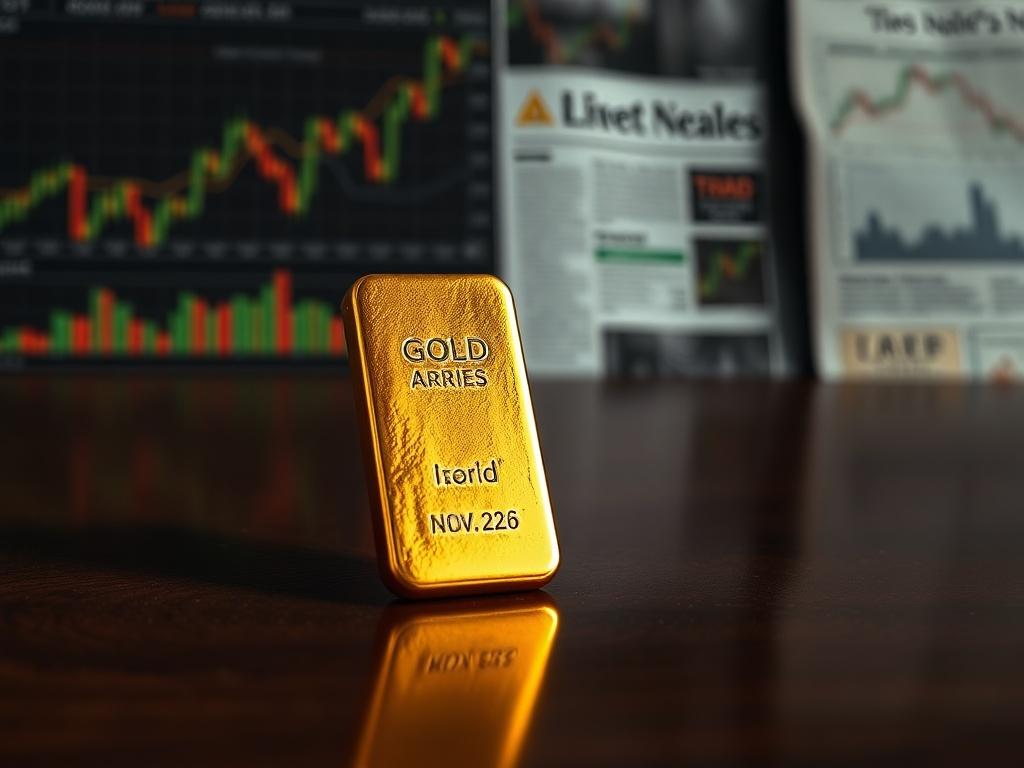
Gold has long been viewed as a safe haven asset, attracting investors during times of economic uncertainty. As we look towards November 2025 and into 2026, it's crucial to explore where gold is projected to go from here. Factors such as inflation, interest rates, geopolitical tensions, and currency fluctuations all play vital roles in shaping gold's trajectory. In this blog post, we will analyze these elements and provide insights into the expected trends in gold prices as we move into the next few years.
Whether you are a seasoned investor or just starting to explore the world of precious metals, understanding the future of gold is essential for making informed decisions. We will delve into the predictions and market analyses that outline how gold may perform in the coming months, while also offering strategic advice for those looking to navigate this dynamic market. Join us as we uncover what lies ahead for gold and how you can be prepared for the changes on the horizon.
Exploring gold's trajectory: Projections for November 2025 and beyond
As investors turn their attention to the future of gold, many experts predict that the metal will experience significant fluctuations leading into late 2025 and into 2026. Analysts forecast that gold prices may find themselves caught between inflationary pressures and economic recovery efforts by central banks. This conflict will likely create a highly dynamic market environment where gold could either soar to new heights or face downward pressure, dependent on prevailing economic conditions. With heightened geopolitical tensions and unpredictable market trends, gold remains a popular hedge against uncertainty, making its projected movement a key area of interest for investors.
Market analysts believe that, by November 2025, gold could reach a pivotal moment as it reacts to several crucial economic indicators. Should inflation remain persistent, leading to sustained interest from those seeking safety in precious metals, prices might rise substantially. Conversely, if economic recovery stabilizes and interest rates increase, we could witness a drop in gold's allure, resulting in lower prices. As these competing forces come into play, stakeholders need to stay informed about the broader economic landscape, which plays an essential role in determining where gold is projected to go.
Key factors influencing gold prices heading into 2026
Several key factors are set to influence gold prices as we approach 2026. Economic uncertainty remains at the forefront, with fluctuating inflation rates and geopolitical tensions playing significant roles in shaping investor sentiment. As central banks around the world continue to adjust their monetary policies, market participants are likely to turn to gold as a hedge against potential currency depreciation. If inflation persists or increases, many investors may view gold as a safe haven asset, driving up demand and consequently pushing gold prices higher. In addition, the ongoing shifts in global trade dynamics and the rise of emerging markets can create both opportunities and challenges for gold, affecting its overall valuation.
Another critical factor is technological advancements and shifts within the mining industry. Innovations in extraction and processing techniques can lower production costs and reveal new gold reserves, which may influence supply dynamics in the market. Furthermore, increased interest in cryptocurrencies could potentially affect gold’s appeal, as new digital assets vie for the attention of investors seeking alternatives to traditional assets. As we analyze the trajectory of gold leading into 2026, it’s essential to keep an eye on these factors and their interplay, shaping the overall landscape for gold investments in the months and years ahead.
Investment strategies for navigating the future of gold in the coming years
As the gold market evolves into 2026, investors need to adopt adaptable strategies to maximize their gains. One effective approach involves a diversified portfolio. By spreading investments across various asset classes, including equities, bonds, and commodities, investors can mitigate risks while capitalizing on gold's potential growth. Moreover, keeping a close eye on market trends and adjusting allocations based on economic indicators helps optimize investment choices. Staying informed about geopolitical developments and inflation trends can offer deeper insights into gold's performance.
Another strategic option is to consider dollar-cost averaging as a way to purchase gold. This method entails investing a fixed amount regularly, regardless of market conditions. This approach minimizes the impact of volatility and allows investors to accumulate gold over time at potentially lower average costs. Additionally, incorporating gold exchange-traded funds (ETFs) or mining stocks can provide exposure to the gold market without the complexities of physical ownership. By employing these strategies, investors can effectively navigate the changing landscape of gold and position themselves for long-term success in the years ahead.